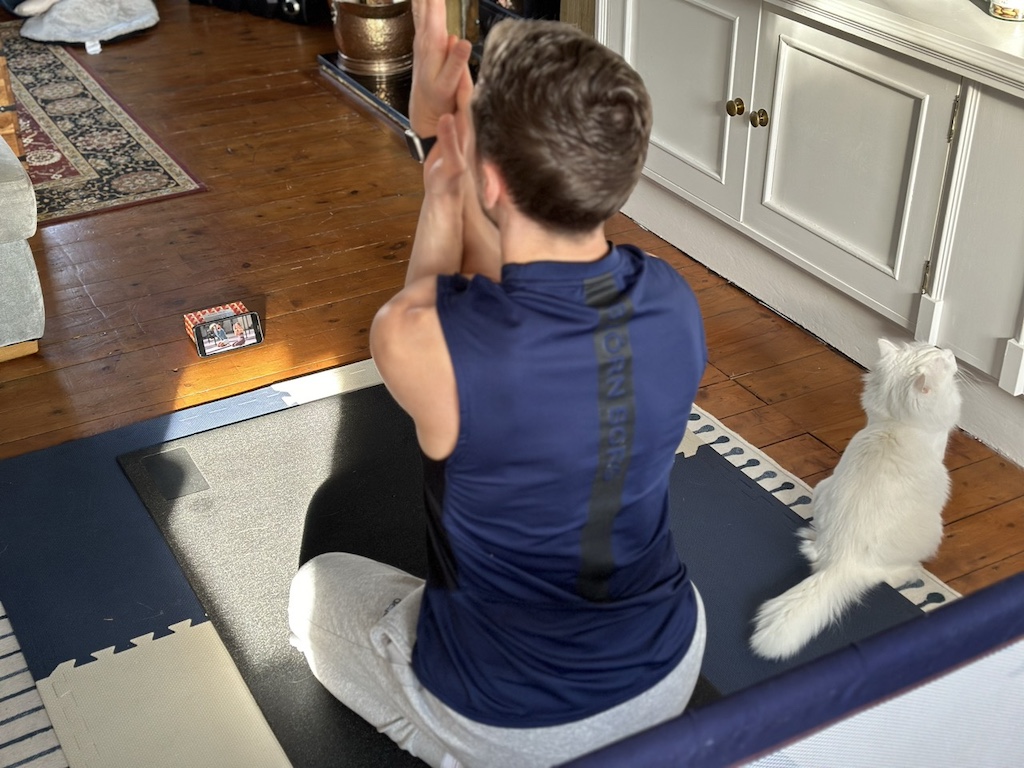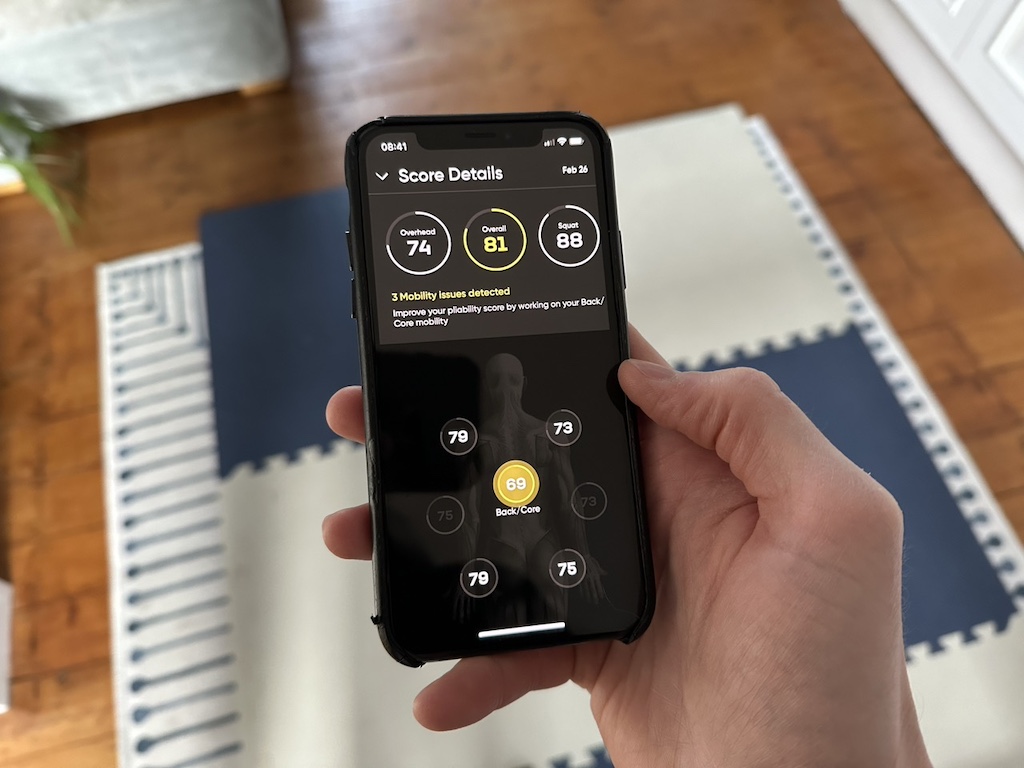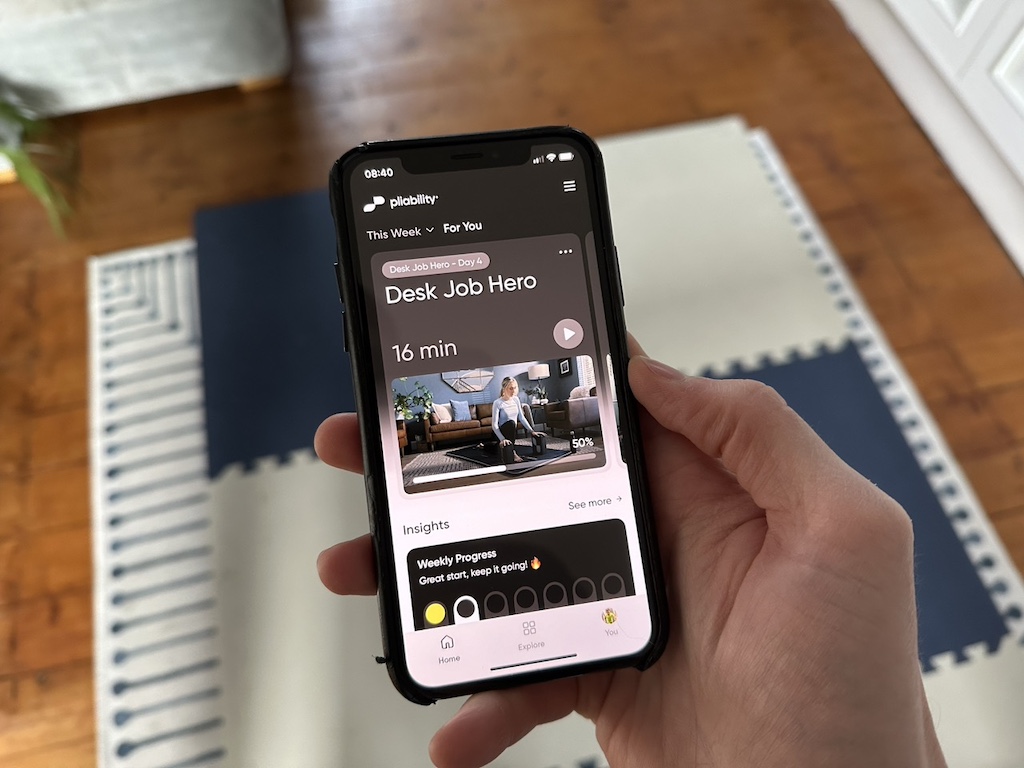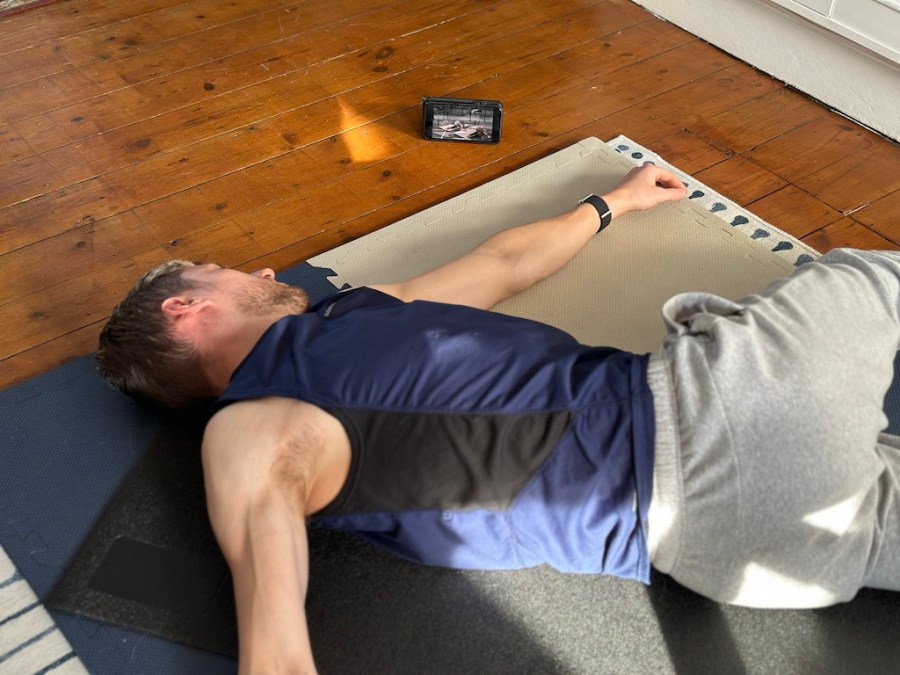Could the daily mobility and recovery routines suggested by the pliability app transform my rigid frame into a well-oiled machine?
It turns out I’m not getting any younger. Neither am I getting any more mobile or flexible in my declining years. So in an effort to improve my mobility, I dusted off my exercise mat and put mobility app pliability to the test. For four weeks, I did one of pliability’s stretching routines every single day to see if it is one of the best workout apps available.
Men’s Fitness verdict
pliability’s comprehensive library of mobility routines is a handy tool to have in your locker, but it could be improved by smart features such as AI form guidance.- Vast library of 1,700+ stretching exercises
- Easy to follow videos and audio cues
- Dedicated paths provide welcome structure
- Smart mobility test feature helps track progress
- Limited range of sport-specific paths (e.g. for football)
- Production value of videos is a little uninspiring
- Despite smart test feature, app doesn’t track form mid-routine
- Doesn’t provide personalized cues to fix form mid-stretch
Why you can trust Men’s Fitness
We spend hours testing every product or service we review, so you can be sure you’re buying the best. Our team of bike reviewers included experienced product testers, journalists and fitness writers – as well as the core MF team – who know exactly what sets the best products apart from the rest. The pliability app was tested by Sam Rider, who is the former fitness editor of Men’s Fitness and a seasoned product tester. Find out more about how we test.
I have a theory that stubborn inflexibility is holding me back. I know this thanks to a Team GB Olympic lifting coach whom I trained with back in my mid-20s. Twice a week he subjected me to a barrage of mobility drills before I was allowed anywhere near the bar, and as a result, my clean and jerk and snatch went through the roof.
A decade later, however, stretching barely registers on my weekly schedule – bar straining to pick my newborn son’s toys off the floor. My trusty exercise mat has been gathering dust in a cupboard for some time. That’s partly because it can be agony, a bit like flossing for the first time in weeks. You know if it became routine, your gums wouldn’t sting so much. But, frankly, it’s tedious.
It’s also time consuming and, despite the army of advocates online telling you otherwise, nowhere near as sexy as a sweaty metcon class. Mobility training, in other words, needs a rebrand. Enter: pliability. Born out of CrossFit, the “human movement” specialists (formerly known as RomWod) are on a mission to extend the benefits the functional fitness community now enjoys to sports and fitness disciplines beyond the box.
“Our ethos is finding freedom through movement,” says Director of Performance, Cody Mooney. They’re not just about helping you cross the proverbial finish line, they want you to enjoy every step along the way.
And a recent systematic review on the effects of static stretching suggests if you follow their lead you could realize plateau-busting gains in strength and power too – results that are especially pronounced in older and more sedentary individuals.
So, with that in mind, I decided to put this theory to the test and see what a month of daily stretching and mobility training could do for my ageing, increasingly stationary, physique.

The features – how the pliability app works
pliability functions, first and foremost, as a vast library of mobility routines, dynamic warm-ups, bodyweight exercises and cooldowns categorized by body parts (e.g. lower back and hips), exercises (e.g. deadlifts and pull-ups) and sports (e.g. running and golf). But one of the cleverest features is its Mobility Test, which is where I’m recommended to start.
This involves performing a series of overhead squats (with arms held aloft rather than holding a bar) in front of my mobile phone’s camera, both front on and to each side, while the app maps out my ROM. With this data it provides a score for dorsiflexion, knee width, scapula rotation and more to calculate an overall mark out of 100.
My magic number is 85 (76 for overhead, 93 for squat), with three mobility issues detected: back arch, low arms and, rather inquisitively, head tilt. A respectable score, I think, but plenty of room for improvement. Armed with this score to beat, I’m next prompted to input more personal details and goals, then kicked through to the main dashboard.
Here I’m presented with a choice. Dive into one of the week’s scheduled routines, which work like CrossFit’s WOD (workout of the day), or start a ‘new path’ based on my preferences.
Initially this was limited to just running and golf, but pliability has since added a Workforce hub for desk bound release and a Pregnancy + Postpartum hub developed with specialist coaches from The MINT Prjct and shot with six-time CrossFit Games champ Tia-Clair Toomey-Orr.
To coincide with the 2024 CrossFit Open, pliability has also released routines tailored to whatever devilish workout combination Dave Castro could conjure up, which I found an especially welcome addition towards the end of my review. But back in January, the obvious choice was the seven-day Welcome Series, which is where I began.

The trial – week by week with the pliability app
For my first routine, I clear some space in my son’s nursery – illustrating that you can get these classes done literally anywhere – prop my mobile up on the floor and hit play. Two models in a dimly lit CrossFit box proceed to demonstrate five lower body stretches, while a narrator with deep, dulcet tones from the Pacific west coast, provides instruction.
The class culminates with a three-minute frog stretch hold, a move that demands 270˚ hip articulation even a toddler would struggle with.
Counting the seconds down is excruciating. Usually I would have tapped out after half a minute, and that’s the point. After initial resistance, my pelvis gradually surrenders to the passive stretch and I can feel my muscles relax, even if only fractionally. The narrator signs off with a pep talk: “Being persistent – and being consistent – is the key,” he purrs.
The rest of the Welcome Series follows a similar pattern. Each routine involves long-held passive stretches, postures yogis would recognize like the downward dog (hamstrings) and forward fold (lower back), and moves popularized by the functional fitness community, like the twisted cross (pecs), seal and sphinx (abs).
Welcome Series on the pliability app
Spending 2+ minutes in each of these poses feels like it’s helping melt away tightness my body has been hanging onto, and I feel better equipped to handle twists and turns on the five-a-side pitch, having spent time mobilizing my body earlier in the day.
By day five the narrator starts introducing two additional elements: eight second nasal breathing and a “rebound” pose at the end of each routine, whereby you’re encouraged to lay flat on your front with eyes closed to let the effects of the class sink in.
“At pliability we believe stretching is essential to an athlete’s routine,” the narrator says, introducing the last day of the series. “It helps to improve flexibility, range of motion and muscle performance. Stretching can also help reduce the risk of injuries, improve circulation and promote relaxation.”
By this point the intensity has really cranked up, kicking off with three back-to-back moves honing in on my – and likely most people’s – major tight spot: the hamstrings.
A half-front split is a brutal way to start a Monday morning. It involves an asymmetrical hamstring, calf and lower back stretch I can barely comprehend, let alone mimic. This torture is followed by a single-leg forward fold, then rounded off with the ‘fragon’ pose, which also feels like it has a personal vendetta against my hips and groin.
Altogether it’s a humbling 20 minutes that reminds me effective stretching can be as physically and mentally testing as a hypertrophy superset or fat-burning workout.

The test – before and after using the pliability app
With the Welcome Series complete, I use the rest of the month to dovetail the Desk Job Hero path, designed to combat sedentary strains and the pitfalls of prolonged sitting, with one named Runner Hip Health. Each involves just two sessions per week, representing a far more manageable commitment that I can build around my regular workouts and working day.
I also dip into the app to find a hamstring-specific routine after a late night football match, and again for a lower back-focused cooldown after a publishing set of burpees, cleans and failed muscle-ups, proving its usefulness as an exercise directory to address specific ailments.
Then, after a month spent accumulating more minutes of mobility training than I have in the previous 35 years, it’s time to revisit the test I performed on day one. Could daily mobility routines have transformed my previously rigid frame into that of a well-oiled machine, capable of bending to my will while harnessing muscles I never knew existed?
Alas, 30 classes and 450 minutes later, my score has dipped by four points, from a PB of 85 to career low of 81. The three issues initially identified (back arch, low arms, head tilt) still persist, and while my shoulder mobility has picked up, my back/core and left hip are now playing up.
And, because I’ve had to cut down on strength training to squeeze in my daily stretching routine, I’ve also felt a little undercooked when I have got back in the gym. My overhead press has dropped off a cliff and the impending 24.1 workout is sending shivers down my spine.
The verdict – is the pliability app worth it?
In fairness, though, the masterminds behind pliability will tell you one month isn’t long enough to enjoy ingrained, long-term gains. Former CrossFit Games athlete-turned-co-founder Mooney says that in the first week you should notice reduced stiffness, improved sleep and enhanced mental calm.
Greater range of motion, increased flexibility, reduced joint discomfort and faster recovery comes after 60 days; enhanced training capacity, improved athletic performance and reduced incidence of injury after six months.
When I put this to the owner of an esteemed London CrossFit box, one that streams pliability routines in its warm-up/cool down area for members to dip in and out of, he’s a little more skeptical. “How much mobility do you actually need?” he asks. “The answer is ‘enough’. Enough to perform an exercise efficiently, effectively and safely.”
At this particular box, rather than prescribing standalone mobility classes, workouts start with the time-honored RAMP protocol (first popularized by Dr Ian Jeffreys and Mark Verstegen in the mid 2000s).
Standing for Raise, Activate, Mobilize and Potentiate, this involves raising the body’s core temperature and boosting blood flow, activating muscles to promote stability and balance, mobilizing areas of the body as required for the workout in question, and potentiating – or priming – the central nervous system for action.
pliability app benefits
For sedentary individuals, a few minutes of mobility work every day will certainly “shift the needle” he said, “but if you’re already mobilizing your body regularly through exercise, cycling to work or playing football, that’s usually enough”. Most people simply don’t have the time to commit an extra 15-20 minutes per day to mobility training.
And yet, this coach admitted, were they to carve out this time to relax – perhaps while mobilizing their bodies with a couple of choice stretches – the mental benefits of slowing down, breathing calmly and being present in the moment could be profound. For me, that’s where pliability excels. It’s as much therapy for the mind as it is for your joints and ligaments.
Every four-minute hold and eight-second breath forces me to stop, to quiet my whirring mind and listen to my body. And now, one month later, I’m armed with a library of CrossFit-approved stretches and mobility drills that I can dip into on-demand.
It might not be the cure-all solution I was hoping for, but it has become a welcome addition to my training toolkit. A reminder to occasionally hit pause, to decompress and surrender to the tension-melting, stress-busting benefits of daily movement.
How we tested the pliability app
Sam Ryder used the pliability app for a minimum of 15 minutes per day over the course of a month, taking the same mobility test at the start and finish to track progress. A regular exerciser with a fairly sedentary job, tight back, tighter hamstrings and dodgy knees, he first embarked on pliability’s Welcome Series, followed by a desk-bound release path and finished off using the app’s warm-up and recovery routines while tackling the 2024 CrossFit Open.






